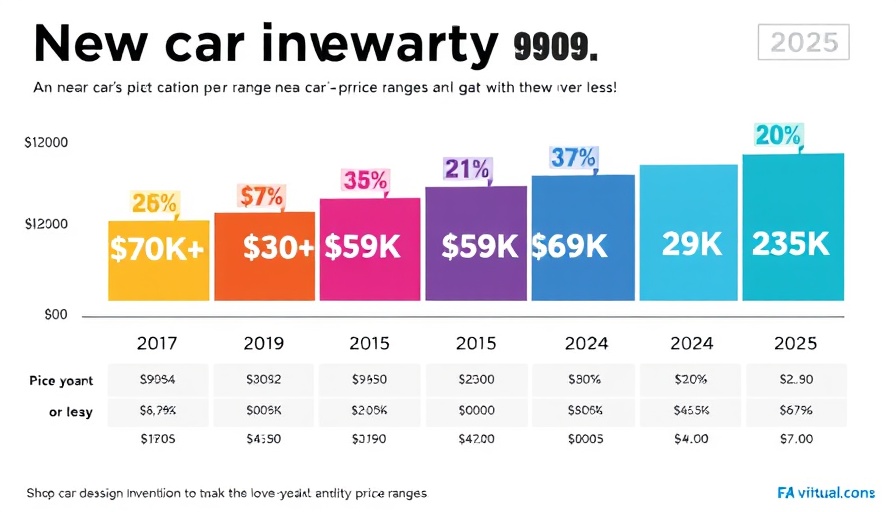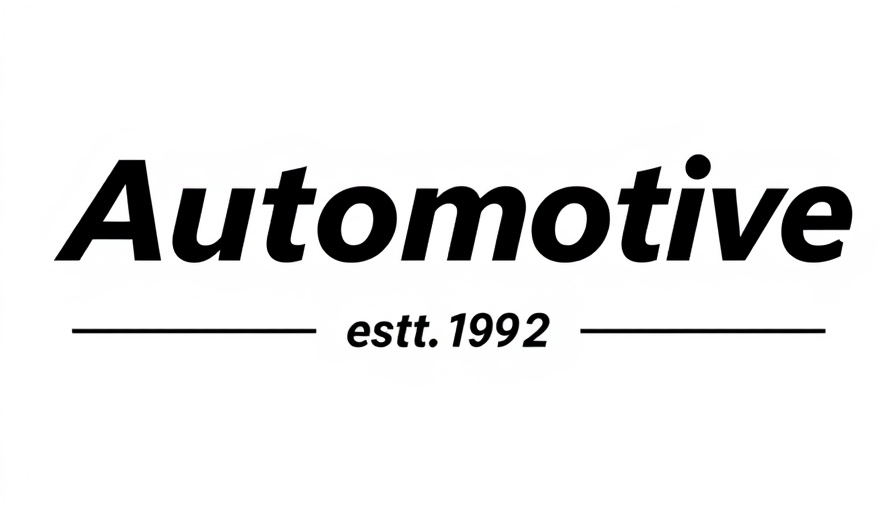
Used Vehicle Prices: A Brief Overview
As the first quarter of 2025 wrapped up, a stunning calm enveloped the used car market. Reports from Cars Commerce revealed that the average list price for used vehicles reported a 0.9% decrease, resting at $28,497. However, experts suggest this declines may not last. With rising tariffs on imported vehicles and increasing costs for new cars, the potential for surging used vehicle prices looms on the horizon.
Understanding the Impacts of Tariffs on Vehicle Prices
The automotive landscape looks poised for changes with a 25% tariff on imported cars now in place. Historically, such tariffs have cascaded into increased consumer costs, reflecting a predictable pattern where used car prices tend to rise when new car prices skyrockets. As Cars Commerce cautioned, “used prices could climb,” indicating that consumers may find themselves facing steeper costs not just for new vehicles, but for used vehicles as well.
The Shift in Supply and Demand Dynamics
Highlighting a crucial trend, the report noted that the supply of used vehicles dropped by 0.6% in Q1, particularly in the $20,000-$49,000 range. This drop coincides with a noticeable hesitance among buyers, as vehicles listed on Cars.com are taking longer to sell—with an average listing duration of 57 days, a 3.8% increase from last year. This indicates that potential buyers are more cautious, contemplating options amid evolving market conditions.
A Closer Look at Consumer Behavior
Consumer behavior has shown a drastic pivot. Nearly 86% of new vehicles are priced above $30,000, significantly constricting options for price-sensitive customers who typically share the market for used vehicles. As of now, only 14% of new vehicle inventory meets this affordability mark, highlighting a growing dependence on the used market, especially for buyers looking to manage their budgets amidst escalating costs.
Interest Rates and Financing Challenges
While the Federal Reserve attempted to alleviate some financial pressure through interest rate cuts, the relief seems to have eluded the auto loan market. The report indicates a rise in auto-loan annual percentage rates (APRs)—up by 19 basis points year-over-year—reflecting stricter credit terms amid broader economic uncertainties. This adds a layer of complexity to consumer choices in the market, making the path to vehicle ownership even more challenging.
A Storm Brewing on the Horizon? Insights and Predictions
As we anticipate what the future holds for the automotive market, the convergence of rising new car prices, decreasing supply of affordable vehicles, and increasing interest rates paints a complex picture. Industry experts warn that if the current trends persist, used car prices may soon see significant increases. “For many Americans, a car isn’t a luxury — it’s an essential part of daily life,” said industry analyst David Greene, focusing on the reliance on used vehicles as new car prices continue to be out of reach.
In conclusion, as these factors play out in the used-car market, dealership owners and general managers should remain vigilant, adapting to shifting dynamics in pricing and customer sentiment. By understanding these trends, they can better prepare for potential upheavals in market demand.
 Add Row
Add Row  Add
Add 

 Add Row
Add Row  Add Element
Add Element 




Write A Comment